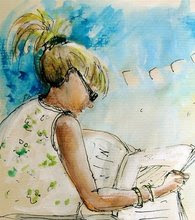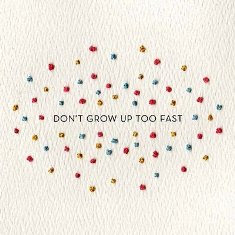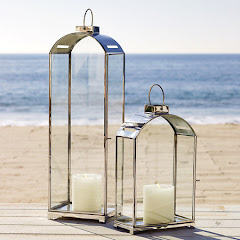
the temple of Impressionism filled with paintings by Manet, Monet, Renoir, Degas, Van Gogh, Cézanne, Gauguin, etc.), the Eiffel Tower, Napoleon’s tomb, the Arc de Triomphe, the Cathédrale Notre-Dame, the Rodin museum, the Centre Pompidou (said to contain Europe’s best collection of modern art), the Musée Carnavalet (a museum of French history housed in two Marais mansions), or the famous Père Lachaise cemetery, where the tombstones read like a Who’s Who of the Hereafter (Oscar Wilde, Frédéric Chopin, Molière, painters Jacques-Louis David, Eugène Delacroix, Georges Seurat, and even Jim Morrison from The Doors are buried here). And although I had zipped through one wing of the Louvre on that first night in Paris, I knew that I had barely scratched the surface there, as well. I hadn’t even seen the apartments of Napoleon III, which is kind of a must-see for those of us in the interior design industry. I briefly considered racing through Paris like a madwoman, trying to fit in as much as possible, but in the end I decided to head back to the Louvre with Karyn and play it by ear. I’ll just have to come back to Paris again next year to see the rest!
One of my favorite things about Paris is the variety of wrought iron grillwork on the buildings. Look at these unusual brackets holding up the balconies on this building, which we passed on our way from our hotel to the Pont des Arts (the pedestrian-only bridge that leads to the Louvre):
Those brackets could be scaled down and reinterpreted as really cool double rod brackets for iron drapery hardware, don’t you think? Hmm… who do we know who could do that for us?? Maybe someday Helser Brothers will come out with the Parisian Balcony Collection of drapery hardware. J
Passing under an archway just before entering the courtyard of the Louvre, I passed this interesting iron grate. I just have ironwork on the brain lately, but this would be a pretty design for the Tableaux faux iron product – I like the leafy vines in the center of the cloverleaf, but I think I’d skip the padlock:
Okay, so now that I’m done taking pictures along the way, I finally made it back to the Louvre itself. Ta da! For those of you who don’t know, right behind me is the main entrance to the museum, a glass pyramid designed by I.M. Pei and added to the Louvre in 1989. Critics complained that the pyramid was ugly, too modern, and would ruin the classical architecture of the Louvre (ironically, the very same complaints were made about the Eiffel Tower when it was built for the 1889 World’s Fair).
Once I got inside and checked my coat, I was determined not to get sidetracked. Today was going to be different; today I had a plan of what I wanted to see; today I had a map in hand marked with the location of the Napoleon III apartments and the Vermeer paintings… But I had to go through a 17th and 18th century French sculpture garden to get there, and I was so intrigued by the differences between these statues and the Greek and Roman statues I’d seen on my previous visit that I had to stop and check them out.
That’s a statue of Perseus and Andromeda taken from the Garden of Versailles, made by a French artist in 1684. This next one is called L’Amour embrassant l’Amitié, or Love Embracing Friendship, made in 1758 by sculptor Jean-Baptiste Pigalle:
Once I tore myself away from the sculptures and got my bearings again, Karyn and I finally made our way towards the Apartments of Napoleon III. Just to be clear, we are not talking about THE Napoleon — these are the rooms of Louis-Napoleon Bonaparte, the Great One’s nephew who ruled France as President of the Second Republic and then as Emperor of the Second French Empire from 1848-1870. It was during Napoleon III’s time in power that Baron von Haussmann got the green light to clear out many of the medieval slums of Paris and create the broad streets lined with uniform Belle Époque buildings that we associate with Paris today (think Champs-Élysées).
The draperies of Napoleon’s apartments were a bit of a let-down. The architectural detail is unbelievably ornate in these rooms but the window treatments are just plain tied-back drapery panels with soft cornice valances or simple swags. But man, oh man – you have to see the CEILINGS! I had a stiff neck when I got out of there! Apparently “the ceiling as the fifth wall” is not such a novel concept after all. Here are my favorite ceilings from Napoleon’s apartments at the Louvre:
One more thing I need to show you is dry rotting silk draperies from the Louvre. Some of you may know that I use more silk in my drapery designs than any other fabric, and I encourage clients to have a nearly-invisible UV film installed on their windows before the draperies get installed as an added protection from sun exposure. True, the linings and interlinings we use for fine draperies protect the valuable face fabric to some extent, but look at what has happened to the hems along the lead edges of these beautiful silk drapery panels where the silk fabric wraps around to the back. The silk fabric has just disintegrated! Such a shame!
And I had to laugh (and my family and friends will all have to laugh AT me, I’m sure) when I discovered a Starbucks in the Louvre, just next to the gift shops. Yes, I stopped in for a latte like the American tourist that I am…
It was dark outside by the time we left the Louvre (and they nearly locked us in again. We stayed all day and I still never found the Girl With the Pearl Earring painting by Vermeer). Isn’t the Louvre beautiful, all lit up at nighttime?
That evening, I went out for dinner with Beth Hodges, a workroom owner, teacher, speaker, and writer – a real authority on the window treatment industry. We ate at Le Procope, a famous restaurant on the rue de l’Ancienne Comédie that was opened in 1686 and is said to be the oldest operating restaurant in France. This is the café where the Enlightenment was conceived, and it was frequented by the likes of Jean de la Fontaine, Voltaire, Jean-Jacques Rousseau, Denis Diderot, Benjamin Franklin, Maximilien Robespierre, Napoleon Bonaparte (the Napoleon you’ve heard of), Victor Hugo, Jean Paul Marat, George Sand, and now by Rebecca Deming Rumpf and Beth Hodges.
I was feeling very adventurous, and I was heady with the history of the place, so I went out on a limb and ordered the “Tête de veau en cocotte comme 1686” because it was one of the original menu items (maybe this is what Voltaire used to eat??) Let’s be very clear that I ordered this myself, of my own free will, full in the knowledge that it was calf’s head stew, because I was convinced that there was no such thing as bad French food. Well, I’m not saying it was bad, but it definitely wasn’t my favorite and I don’t recommend it. Thank goodness I was able to fill up on the oysters and prawns in my fruits de mer appetizer or I would have starved – next time, I’m getting the Coq au vin! Here’s Beth and her beautiful ice cream dessert at Le Procope:
Well, that’s pretty much it, folks. Tuesday we did a lot of souvenir shopping (I spent most of the day in search of the perfect Eiffel Tower souvenir), then had a wrap-up meeting in the hotel lobby to go over departure details and say our formal goodbyes. Here’s California designer Doreen Yun, my roommate Maria Vila, me, and the fabulous Jackie Von Tobel of Las Vegas mugging for the camera after the meeting broke up:
After that we had one last, fabulous dinner in Paris, this time at Les Bouquinistes, where I ordered safe grilled scallops with risotto and thoroughly enjoyed every bite.
This has been such a wonderful opportunity for me, and I’m so grateful to Helser Brothers for sending me to Paris and for allowing me to share the experience with all of you on their blog. THANK YOU!!!
www.Futuroscope.com























.jpg)







Nenhum comentário:
Postar um comentário